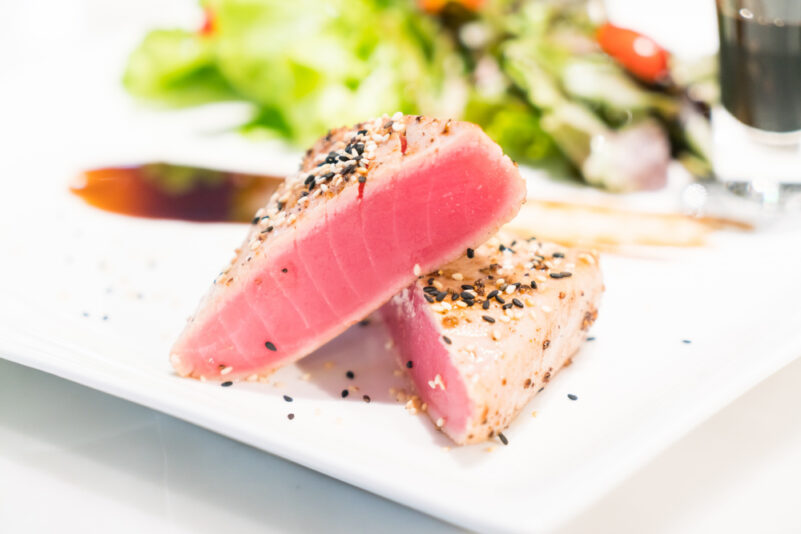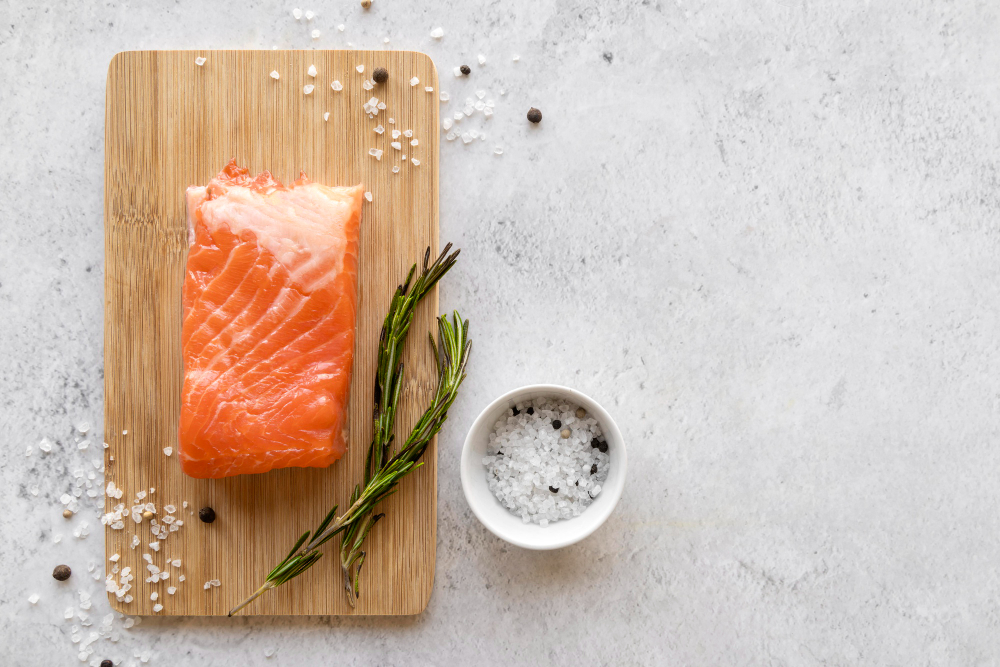Both salmon and mahi tuna offer health benefits as they are rich in omega-3 fatty acids, which support heart health. Salmon is particularly known for its high omega-3 content, including EPA and DHA, which are essential for brain function and reducing inflammation. Mahi tuna also contains omega-3s but in lower amounts.
Salmon is a good source of vitamin D, B vitamins, and selenium, contributing to bone health and antioxidant support. On the other hand, mahi tuna provides significant amounts of protein, selenium, and vitamin B12.
In summary, both fish are nutritious, but salmon stands out for its higher omega-3 content and additional nutrients, while mahi tuna is a good source of protein and other essential nutrients.
Ways to Cook Salmon to Maintain Its Health Benefits
The best way to cook salmon to retain its healthy benefits is to use methods that preserve its omega-3 fatty acids and nutrients. Here are some recommendations:
- Baking or Roasting: Cooking salmon in an oven at a moderate temperature (around 375°F or 190°C) helps retain its nutrients. Bake or roast it with minimal added fats and a variety of herbs for flavor.
- Steaming: Steaming is a gentle cooking method that helps to preserve the omega-3 content of salmon. It also keeps the fish moist without adding extra fats.
- Grilling: Grilling salmon is another healthy option. Use a lower heat setting to avoid charring, which can potentially form harmful compounds. Marinate the salmon with herbs and citrus for added flavor.
- Poaching: Poaching involves cooking the salmon in simmering liquid. This method is gentle and helps preserve the fish’s nutritional value. Use a flavorful broth or wine for poaching.
- Sautéing: If you choose to sauté, use healthy oils like olive oil. Cook over medium heat and avoid overcooking to preserve the omega-3 fatty acids.
Avoid deep-frying or heavily battering the salmon, as these methods can add unnecessary calories and potentially negate some of the health benefits. Additionally, try to include a variety of herbs and spices to enhance flavor without relying on excessive salt or high-fat sauces.
How to Cook Mahi Tuna to Maintain Health Benefits
To retain the healthy benefits of mahi tuna, consider these cooking methods:
- Grilling: Grilling mahi tuna is a healthy option that imparts a smoky flavor. Use a moderate heat setting, and marinate the tuna with herbs, citrus, and olive oil for added flavor without compromising its nutritional value.
- Baking or Roasting: Similar to salmon, baking or roasting mahi tuna in the oven at a moderate temperature helps preserve its nutrients. Use minimal added fats and consider seasoning with herbs and spices.
- Steaming: Steaming is a gentle cooking method that can help retain the moisture and nutrients of mahi tuna. Steam the fish with aromatic herbs or a splash of citrus juice.
- Sautéing: If you choose to sauté, use a healthy oil like olive oil. Cook over medium heat and avoid overcooking to maintain the nutritional benefits.
- Ceviche: For a refreshing and nutrient-preserving option, consider making mahi tuna ceviche. The fish is “cooked” by marinating it in citrus juices, preserving its texture and nutritional content.

Similar to salmon, avoid deep-frying or heavily battering mahi tuna, as these methods can add extra calories and potentially diminish its health benefits. Additionally, using a variety of herbs, spices, and citrus can enhance the flavor without relying on excessive salt or high-fat sauces.
Is it Safe to Eat Salmon or Mahi Tuna Medium Rare?
While some people enjoy salmon and mahi tuna cooked to medium rare to preserve their moistness and flavor, it’s essential to consider food safety. The FDA recommends cooking fish to an internal temperature of 145°F (63°C) to ensure the elimination of harmful bacteria or parasites that might be present.
If you choose to eat salmon or mahi tuna medium rare, it’s crucial to source high-quality, fresh fish from reputable sources to reduce the risk of foodborne illnesses. Additionally, freezing fish before consumption can help eliminate parasites.
If you have specific health concerns or conditions that make you more susceptible to foodborne illnesses, it’s advisable to follow the recommended cooking guidelines to ensure safety.
How Often Can I Eat Mahi or Salmon Per Week?
Including mahi or salmon in your diet is a healthy choice due to their rich omega-3 fatty acids, protein, and other nutrients. The American Heart Association recommends eating at least two servings of fatty fish, such as salmon or mahi tuna, per week. Each serving typically consists of about 3.5 ounces or 100 grams.
Eating fish regularly provides various health benefits, including cardiovascular support, brain function, and overall well-being. However, it’s important to consider factors like mercury content. Both mahi and salmon are generally low in mercury, making them safe options.
Variety is key in a balanced diet, so you might want to include different types of fish to benefit from a range of nutrients.
What are Some Fish Types That are Considered High in Mercury?
Certain fish are known to be higher in mercury, and it’s recommended to limit consumption, especially for pregnant women, nursing mothers, and young children. Some fish with higher mercury levels include:
- Shark
- Swordfish
- King mackerel
- Tilefish
These fish tend to have longer life spans and, as a result, accumulate higher levels of mercury in their tissues. It’s important to be aware of mercury levels, especially for vulnerable populations, as excessive mercury intake can be harmful to the developing nervous system.

